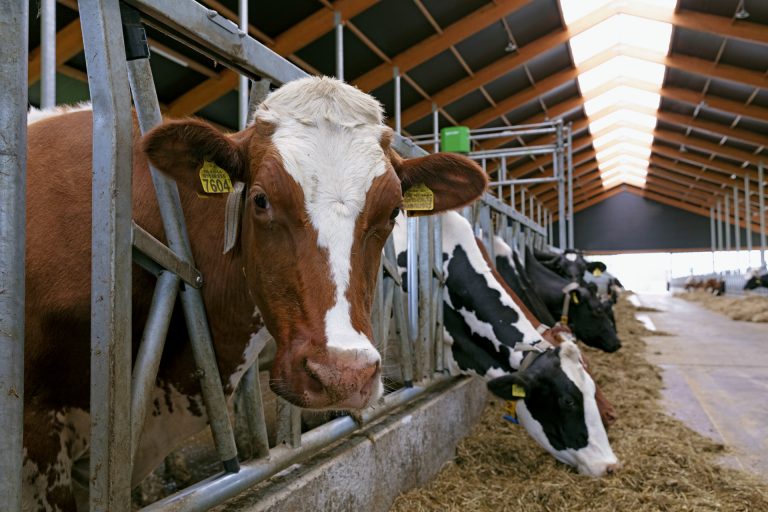Building a new barn happens once in a generation. We are proud of the first CONO barn, built by CONO dairy farmers André, Jolanda and company successor Stan Schilder in Spierdijk. The CONO stable fits the opportunities for the farmer in the future and the quality and sustainability ambitions of CONO Cheese Makers.
The CONO shed is one of the most sustainable sheds of the moment and a wonderful element in our honest story of real attention to animals, the environment and the surroundings.
Sustainable values
The success of the CONO cheese factory brought two thoughts together. Firstly, the realisation that such a beautiful design is a statement in the UNESCO heritage that is the Beemster, where building can only take place under strict conditions. And secondly, the knowledge that it is quite difficult for farmers to get permission to build a new stable that fits in with the landscape. This is how the idea of the transparent CONO stable was born, based on the CONO cheese factory.

Friendly house for animals, environment and surroundings
Many sustainable materials and techniques were used in the construction of the barn. Wooden trusses, for example, so that the cows suffer as little radiation as possible. And state-of-the-art barn equipment including a low-emission floor made of half concrete, half rubber, which reduces the emission of ammonia. The cows are taken extra good care of with spacious cubicles and walkways, cow brushes and a cow monitoring system for 24/7 monitoring of animal welfare. A landscape architect will provide beautiful and sustainable planting around the new building with a ribbon of bees and lots of greenery. In the spacious multifunctional reception area above the stables, participants from the care farm are trained for a further step into society and groups are welcomed for farm education.
Less methane emissions
In the CONO shed, people can see with their own eyes that the animals are well taken care of. Andre and Jolanda have also added extra elements to the barn, such as a mono-manure digester. For this, the daily fresh manure is led through a collecting basement to a heated silo. The methane that is produced there feeds two gas engines. These generate both electricity and heat to over eighty degrees. This energy is used on the farm and in the neighbouring residential area. Win-win, in other words. Moreover, because the methane - a strong greenhouse gas - is used directly and does not end up in the air, it is even a triple win situation. With the mono-dung digester, the stable can even be called energy positive! And the surplus of electricity benefits our cheese production.

High cow comfort
The wood for the rafters and purlins of the roof comes from reforestation projects and has some interesting properties compared to steel. For example, it does not conduct electricity and prevents radiation, which improves cow comfort. And although tastes differ, almost everyone agrees: it also looks much nicer! The barn equipment complies with the MDV standard (Yardstick of Sustainable Livestock Farming). This means that the animals have the highest standard of welfare.

